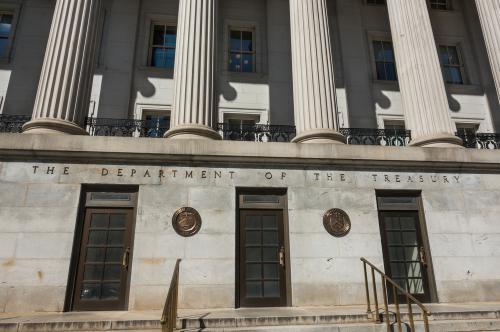A version of paper was presented at the 7th Municipal Finance Conference at The Brookings Institution on July 16-17, 2018.
Local newspapers in the United States have been steadily declining in recent years. Accompanying this change was a decline in statehouse reporters who play an important role in gathering information about local governments and reporting it to their readers. Related academic studies in the political economy space show that geographic areas with reduced local media coverage have less informed voters and lower voter turnouts, removing the incentives of local politicians to work hard on behalf of their constituencies.
Despite the growing academic research on the real effects of media coverage on finance outcomes, it still remains an open question whether shocks to media coverage affect these outcomes in the long run. If a negative coverage shock such as a newspaper closure leads to increased government inefficiencies and informational frictions, then potential municipal lenders will likely demand higher yields to compensate for these effects. On the other hand, if there is high degree of substitutability between the affected media outlet and alternative, unaffected outlets, then there should be no effect on local financial markets in the long run. This effect could even be positive if these alternative sources of news provide more accurate and timelier information to their readers.
Pengjie Gao of the University of Notre Dame and Chang Lee and Dermot Murphy of the University of Illinois at Chicago, empirically examine how shocks to local media coverage affect long-run public borrowing costs. The municipal bond market provides an ideal setting for their study because the individual bonds are largely bought and sold by local investors, providing a more direct link between local media shocks and securities prices. They use local newspaper closures as a proxy for local media shocks, as the closures effectively cause large, discrete changes in local media coverage. Their main finding is that newspaper closures have a significantly adverse impact on municipal borrowing costs in the long run. Specifically, following the three year period after a newspaper closure, municipal bond offering yields increase by 5.5 basis points, while yields in the secondary market increase by 6.4 basis points; these results are significant at the 1% level. Further, these results are robust to a comparison of yields between affected and unaffected counties in the pre-closure period. The effect of newspaper closures on revenue bonds, which are backed by cash flows generated by specific projects and more subject to misappropriation, is even stronger, with offering and secondary yields increasing by 10.6 and 9.9 basis points. In dollar terms, an additional 10 basis points increases the cost of an average issue by about $650 thousand.1 Taken together, their evidence suggests that there is not a sufficient degree of substitutability between local newspapers and alternative information intermediaries for evaluating the quality of public projects and local governments.
Read the full paper here.
The authors did not receive financial support from any firm or person with a financial or political interest in this article. Neither is currently an officer, director, or board member of any organization with an interest in this article.
-
Footnotes
- The average issue size and duration are about $65 million and 10 years in our sample. The $650 thousand estimate is obtained by multiplying $65 million by 10 basis points, and then by the average duration of 10 years.
The Brookings Institution is committed to quality, independence, and impact.
We are supported by a diverse array of funders. In line with our values and policies, each Brookings publication represents the sole views of its author(s).








